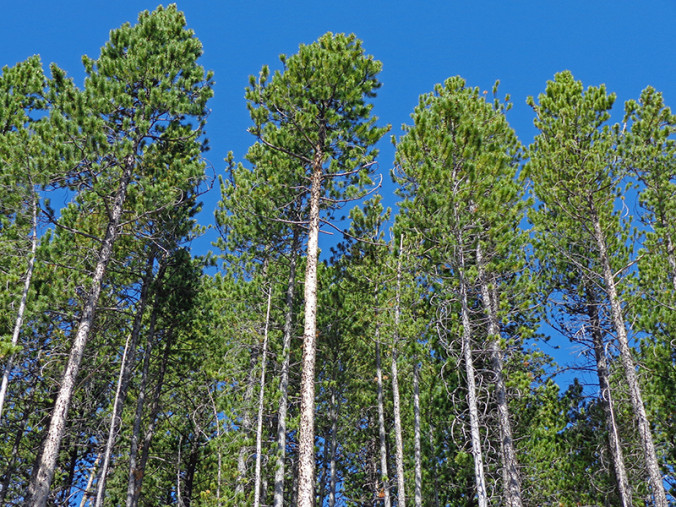Lodgepole pine is a coniferous linchpin of forest ecosystems across a vast area that encompasses the western Canadian province of British Columbia and runs down the Rocky Mountains into the United States of America. It is a highly adaptable tree that can grow in all sorts of environments, from water-logged bogs to dry sandy soils.
Tall, straight and slender, it takes its name from the use of Canada’s first people for tepees, and by subsequent settlers for the construction of buildings. Also, in the spring, indigenous Canadians would strip off long ribbons or ‘noodles’ of the sweet succulent inner bark. It would be eaten fresh or stored.
Lodgepole pine timber is a mainstay of British Colombia’s forest industry. It is likely that increasing volumes of lodgepole pine timber will be exported to Australia to support building and construction activity.
Lodgepole pine cones can remain on trees for a decade, tightly closed and secured with resin, waiting for a forest fire to melt the seal. Once a fire has safely passed the parent tree stored seeds are showered over fertile ash and a blanket of new seedlings shoots up ahead of any competition.
Unfortunately, lodgepole pine is the main host of the mountain pine beetle, which shares its territory and constantly attack trees. In summer, female beetles bore holes in the trunk and lay their eggs in galleries evacuated in the inner bark. The beetles have a symbiotic partnership with blue stain fungus, which they carry in special sacs in their mouthparts. As beetles chew, the fungus colonises cells in the inner bark interfering with the tree’s flow of fluids, and disrupting its normal defence by producing a toxic resin. The beetles get an easy ride and so does the fungus inside the insects’ chambers creating spores, ready to be spread the next summer by the beetles that emerge and go off to find another host tree.
‘Traditional’ extreme winters kill almost all beetle larvae, and healthy trees are able to live with, or fend off routine attacks by the remaining insects. In fact, having some beetle activity picking off weak trees insures enough deadwood fuel that when the lightning sparks of fire the lodgepole pine trees, with their cones have the advantage over other species.
Tepee construction by Canada’s first people from straight, slender lodgepole pine poles.
However, global warming has made the last few decades anything but routine. Mild winters have allowed beetle populations to explode, and the lodgepole pines’ defences have been overwhelmed. Infected wood turns a grim blue-grey, needles turn brown and healthy trees have died in huge numbers.
A staggering 18 million hectares of forest have been affected, and Canadian authorities have spent or committed two billion dollars to fight the beetle which is spreading dramatically beyond its normal range.
